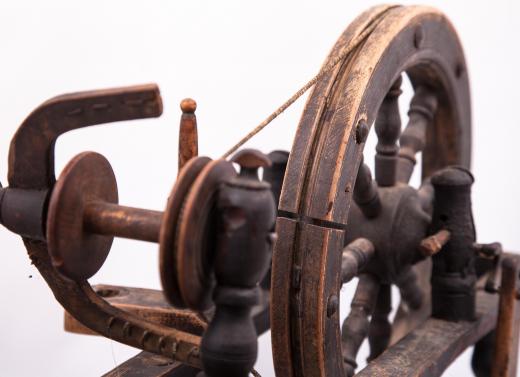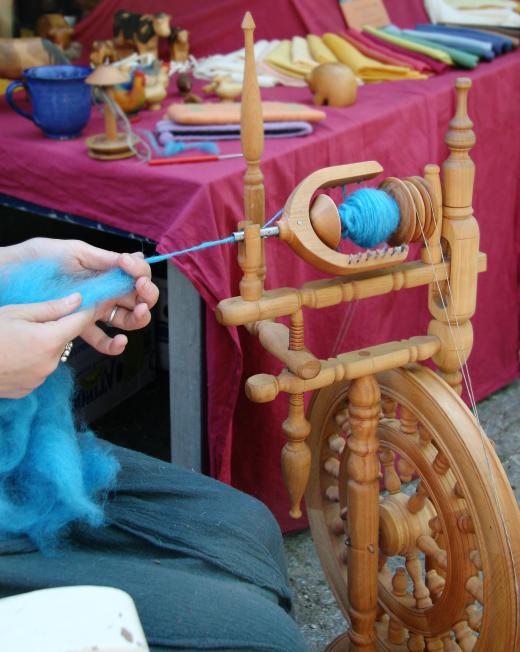A spinning machine is a piece of equipment which is used to spin fibers such as wool, flax, or cotton into thread, yarn, and related materials. Spinning machines come in a wide variety of shapes and sizes. Spinning machines are behind many industrial processes which involve fiber, as they are used to process the fiber so that it can be used to make things like fabric. A spinning machine for industrial use can be quite large and very expensive, while smaller machines for hobbyists operate on a much smaller scale.
Historically, spinning was done by hand, using a variety of tools including the distaff and the spinning wheel, invented during the Middle Ages. The development of the spinning wheel revolutionized the world of fiber working by allowing people to spin much larger volumes of fiber at any given time, streamlining and speeding the process considerably. In the 1700s, the first real spinning machine, known as the spinning jenny, was introduced, making industrial-scale production of fibers possible.

Modern spinning machines are capable of processing very high volumes of fiber. They can work in a number of different ways, depending on design. Some spin using methods which would be recognizable to earlier humans, while others use more novel techniques, such as open end spinning. The machine can be adjusted to create a finished product of varying thickness and strength, and spinning machines can also be programmed to produce threads and yarns with multiple plies. A programmable spinning machine usually has a number of preset programs, along with custom programming options.

The finished thread, yarn, or other material can be packaged in a variety of ways. Industrial spinning machines can directly connect with packaging equipment so that as the fiber is finished, it is wound up and packaged. Packaging of the finished product is usually designed to prevent it from tangling and snaring during transport, and to make it easy to use. For example, thread can be wound around a bobbin. Smaller batches of finished fibers may be folded in hanks, as seen with embroidery thread.
A textile spinning machine for industrial use is generally designed to function without the need for a human operator to stand by. The machine may have safety features such as automatic shutoffs which kick in if the finished thread or yarn breaks, and it can spin varying amounts of fiber, depending on the amount of available raw fiber. These machines can be dangerous to be around, because they operate at very high speeds and they have moving parts which are capable of severing fingers and causing other types of injuries among inattentive users.
Ever since she began contributing to the site several years ago, Mary has embraced the exciting challenge of being a About Mechanics researcher and writer. Mary has a liberal arts degree from Goddard College and spends her free time reading, cooking, and exploring the great outdoors.

